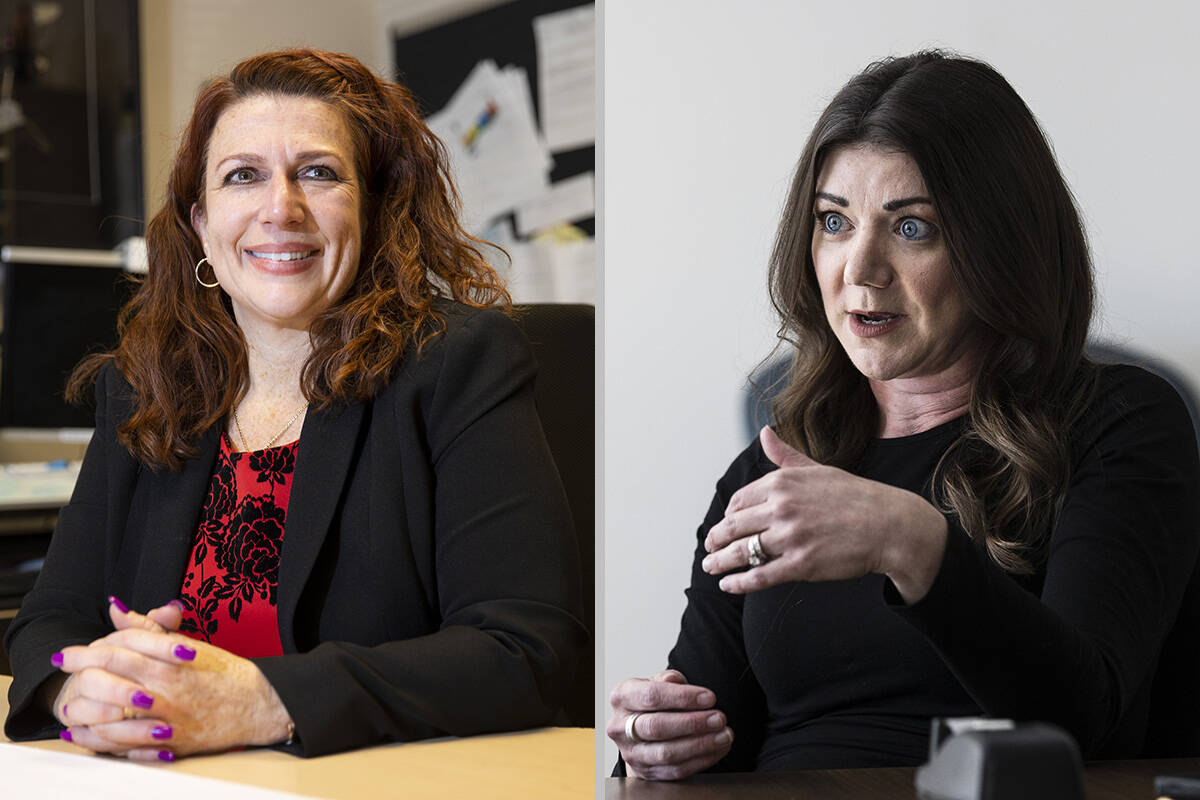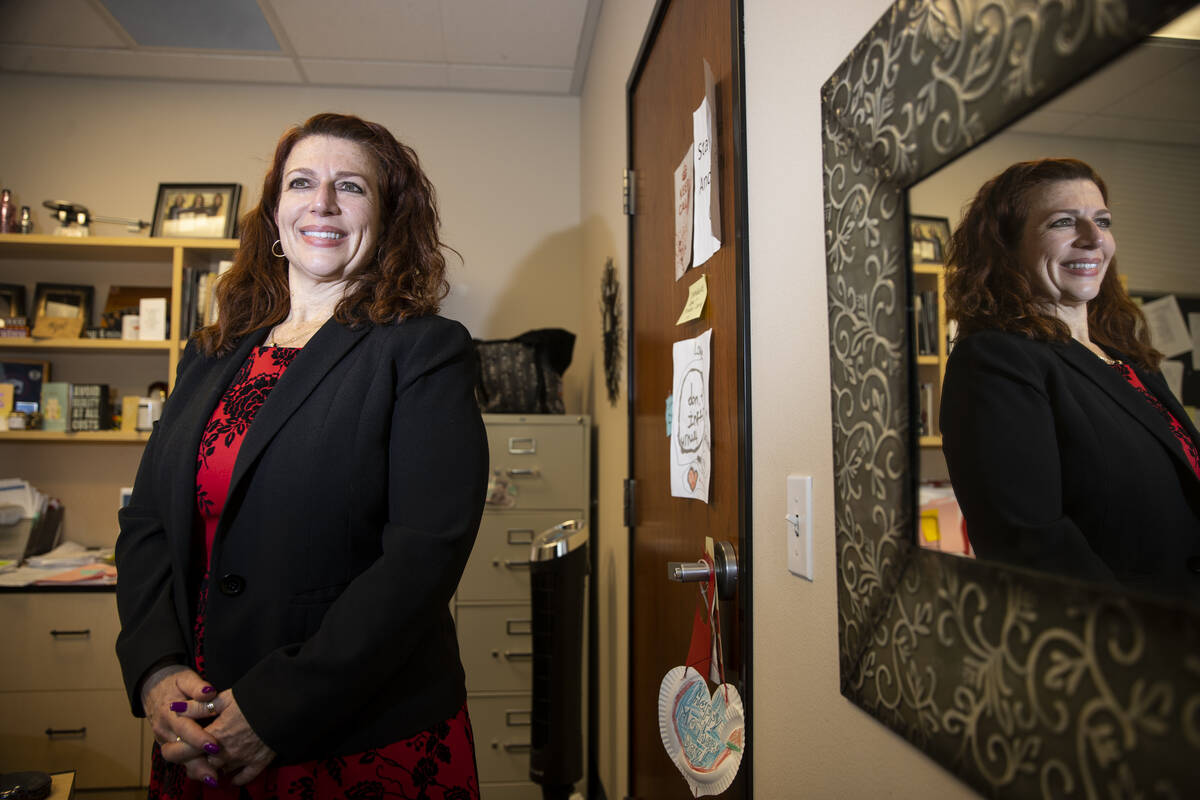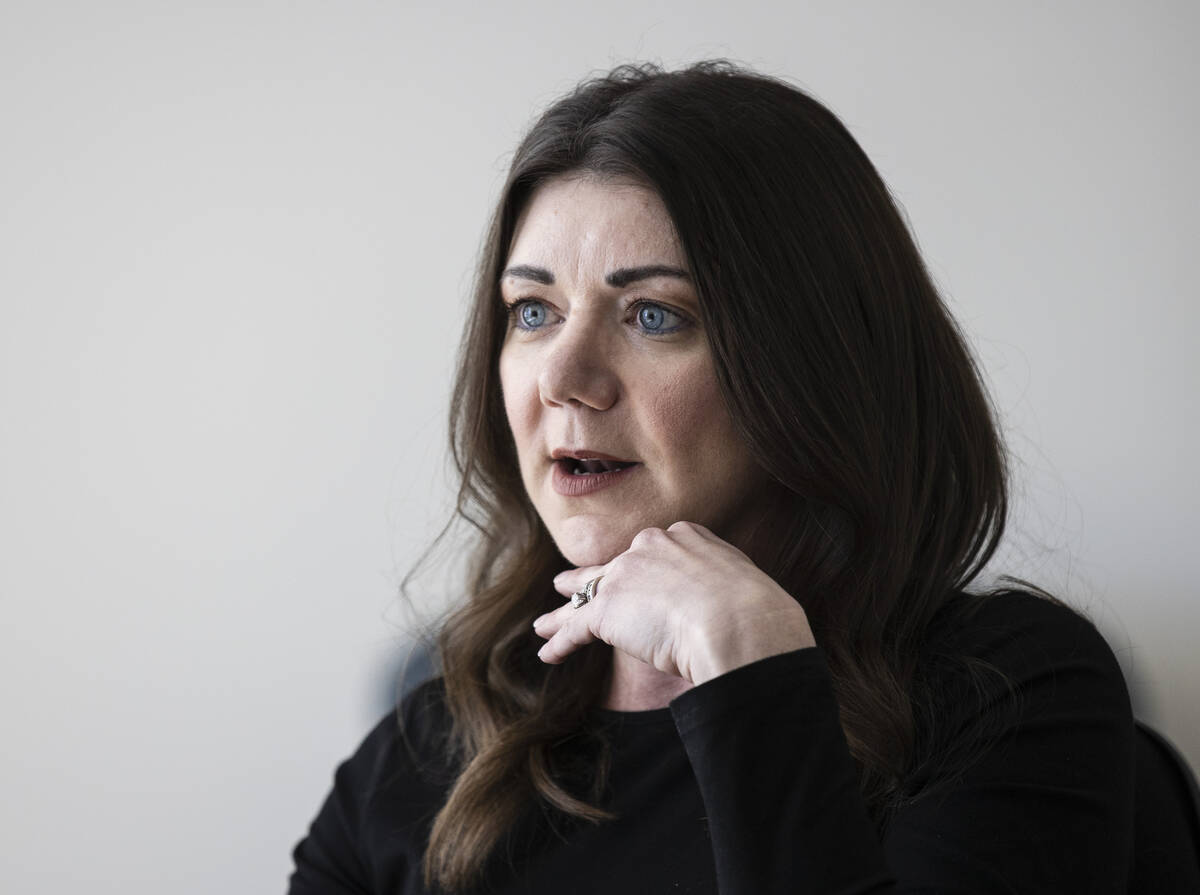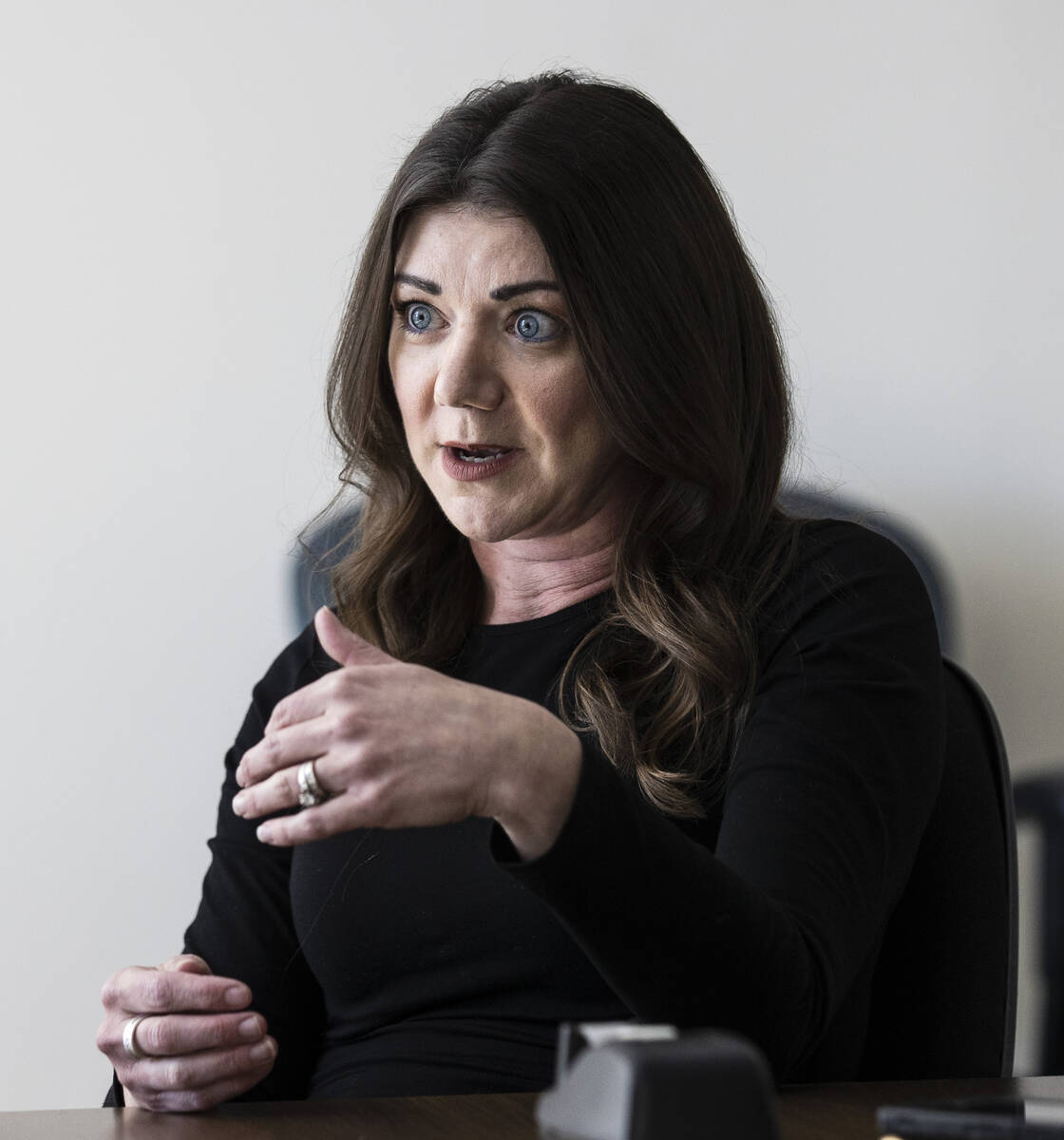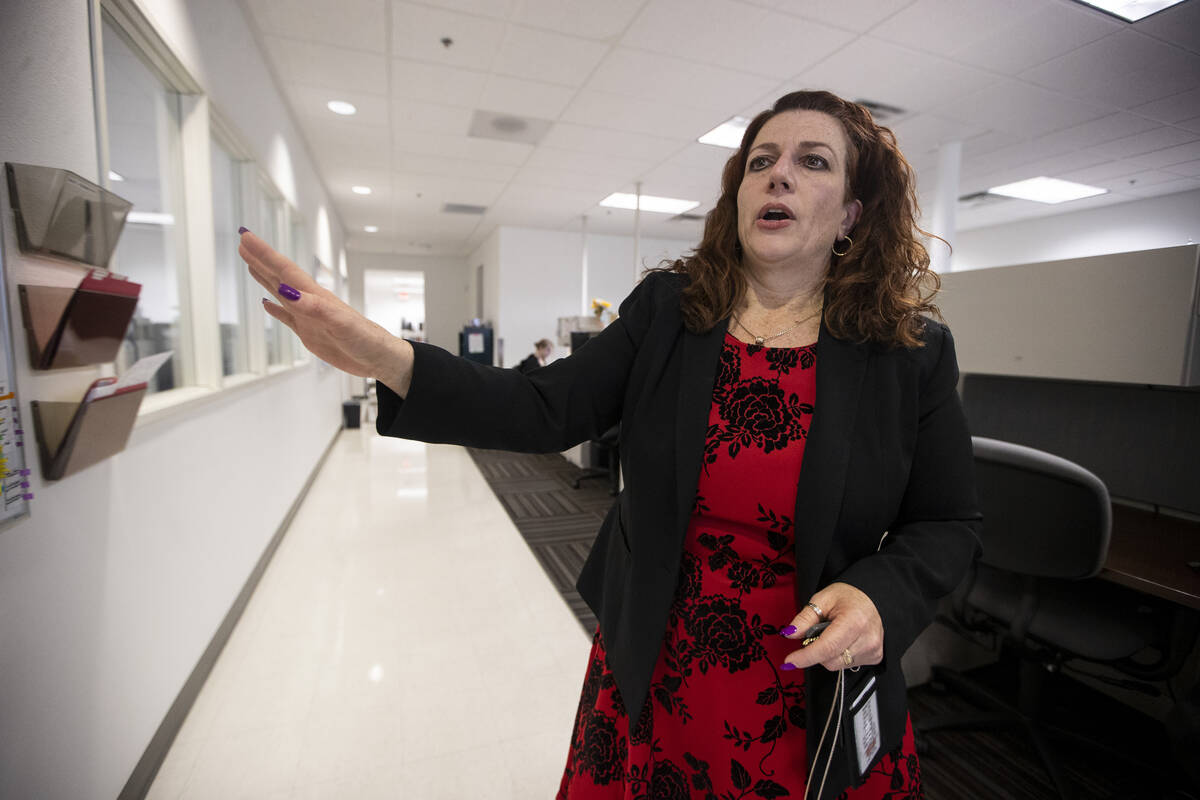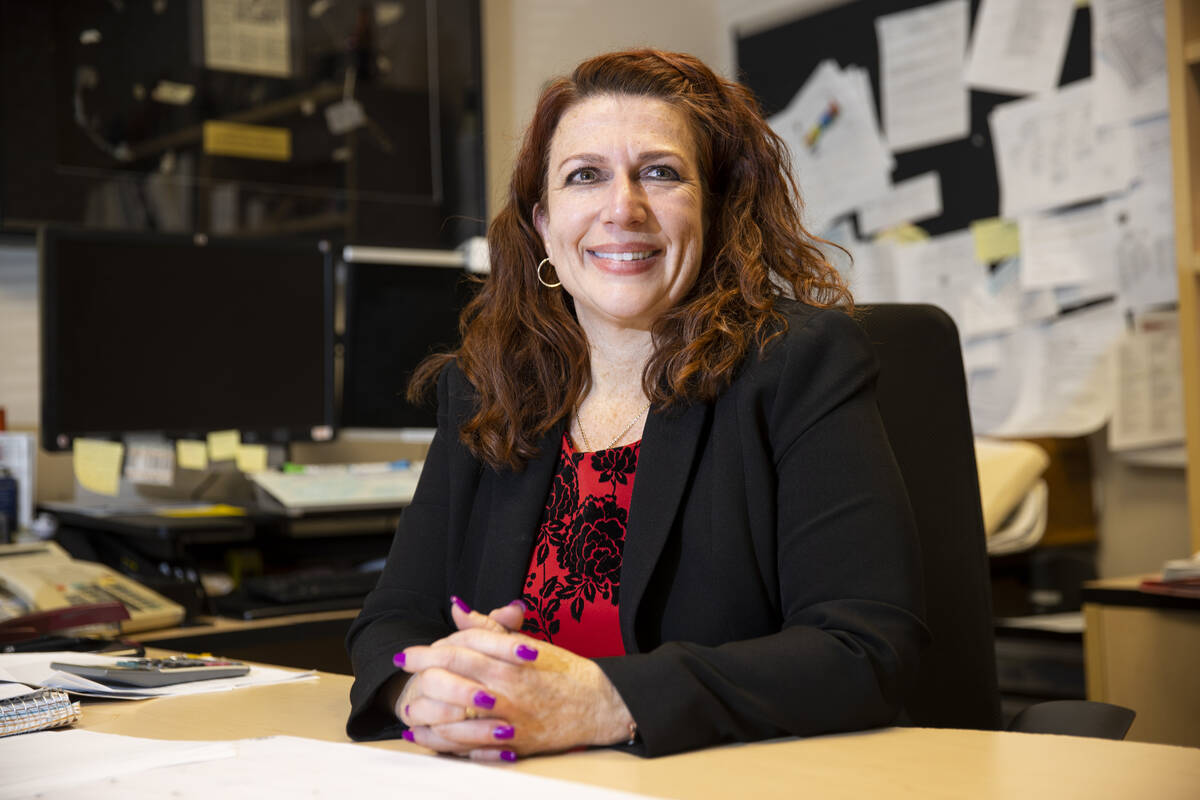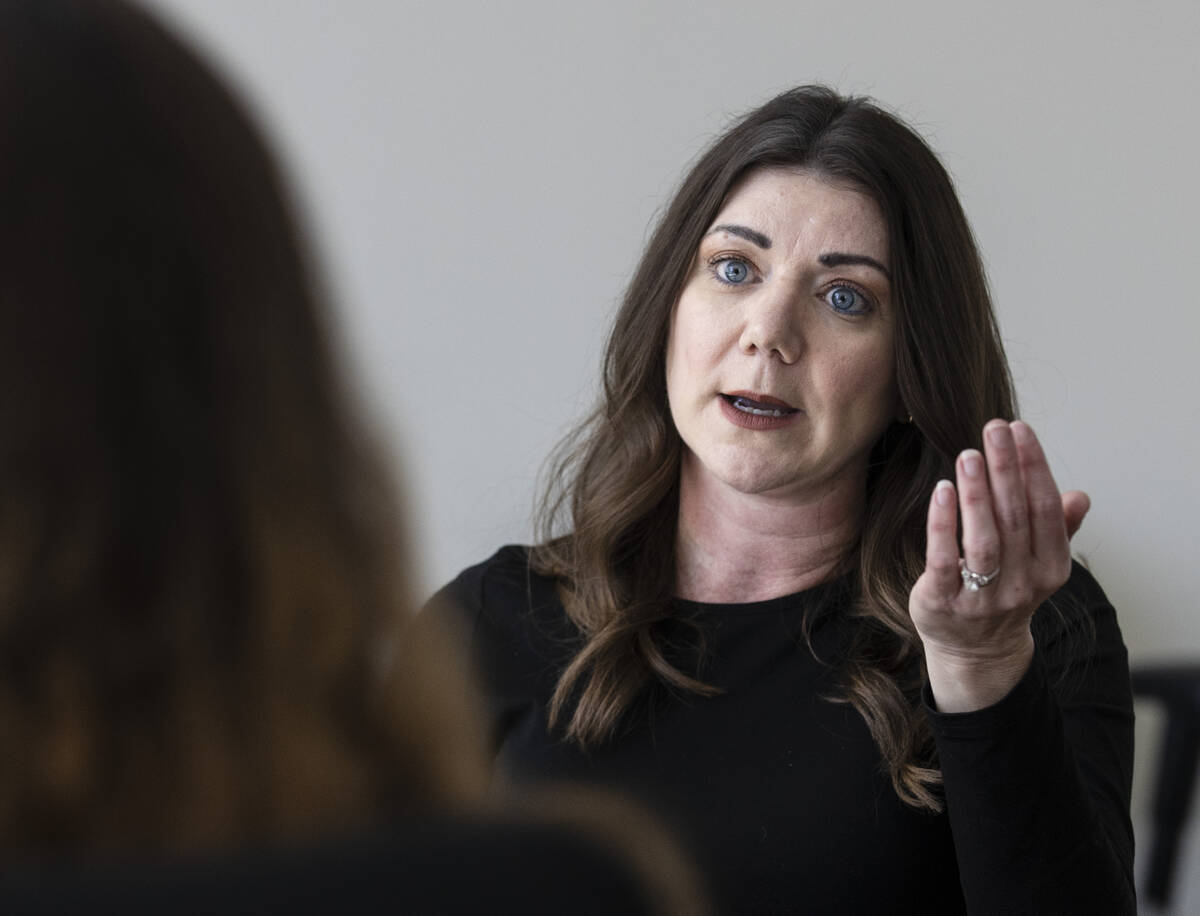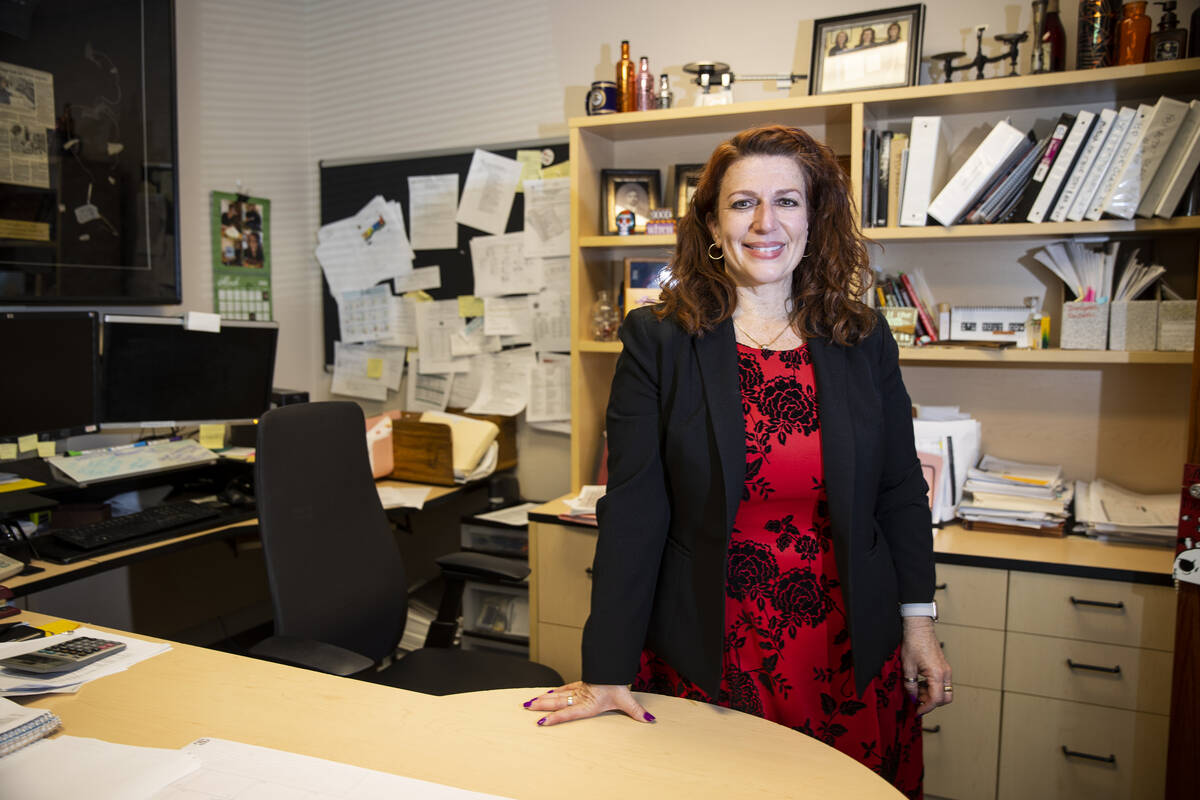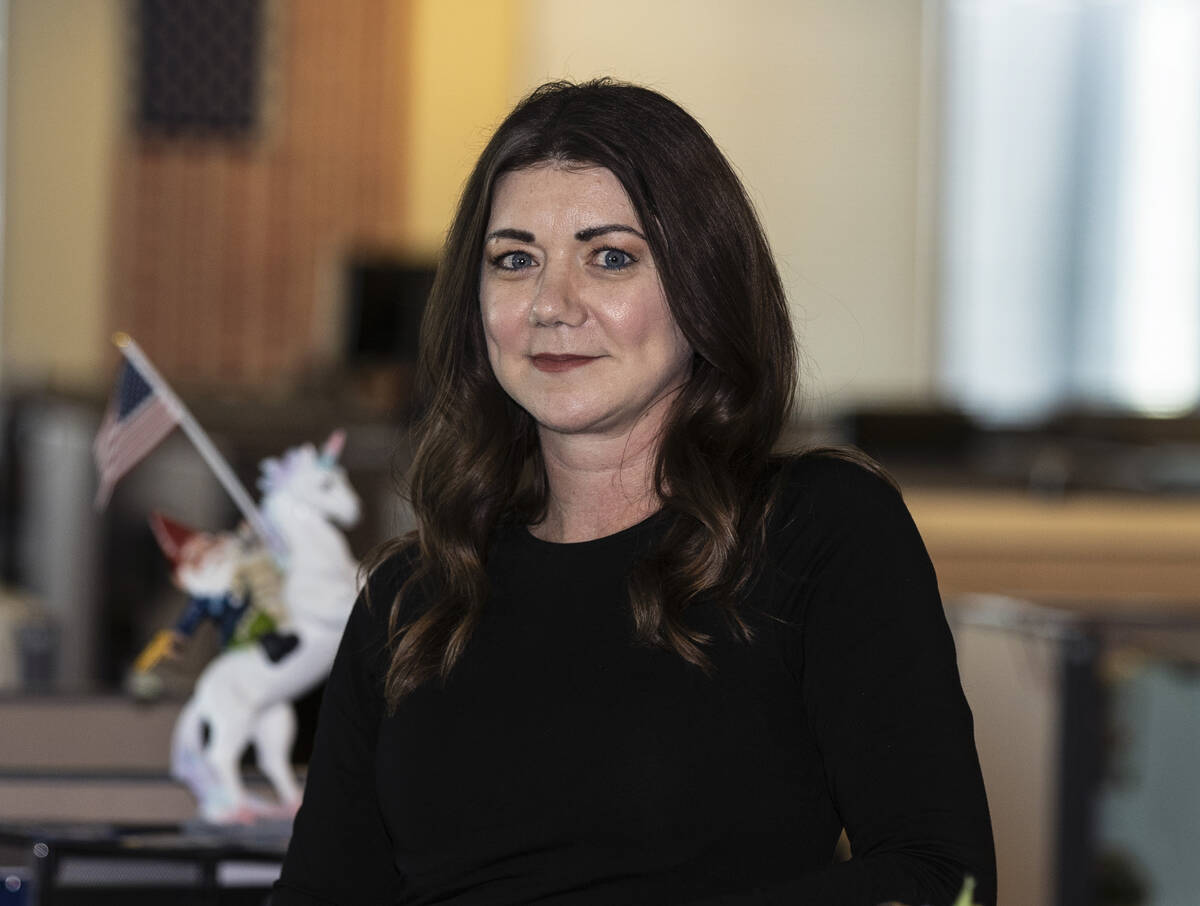‘Crime fighters behind their computers:’ 2 women use science, data to solve cases
They didn’t attend a police academy, and their badges don’t say “detective,” but two managers are using science and data to help Nevada’s largest law enforcement agency solve every type of crime.
The Las Vegas Metropolitan Police Department Foundation, a nonprofit organization that raises funds to support Metro’s programs and initiatives, is expected to honor several women this month who hold leadership positions in the department. Among them are Kim Murga and Gina Fackrell.
Kim Murga
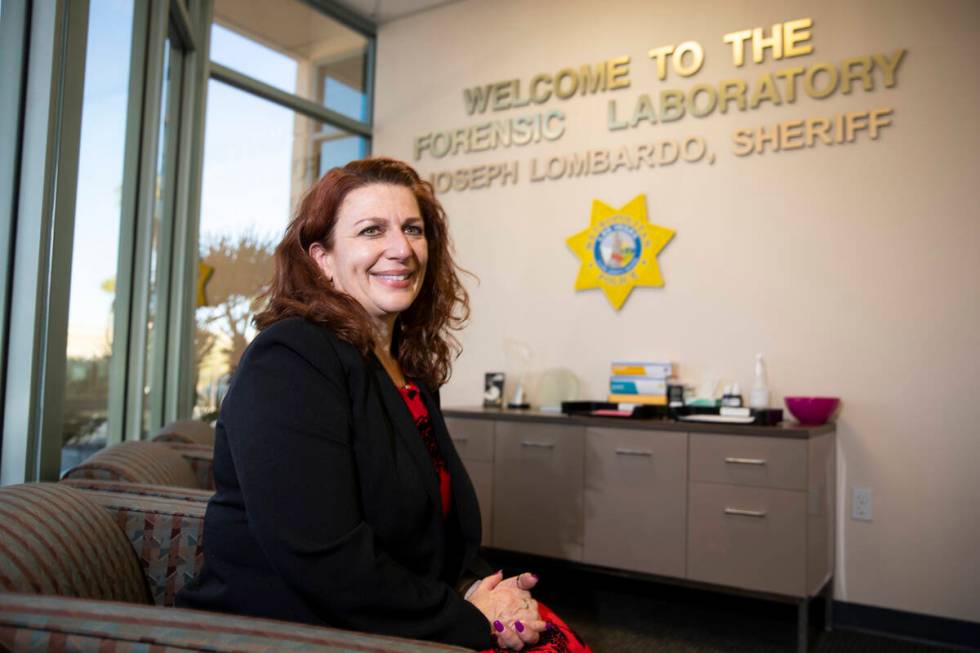
Murga, director of laboratory services for Metro’s crime lab, oversees 80 employees who use fingerprints, DNA and bloodwork to investigate about 24,000 cases a year.
“In my 26-year career, I’ve always been in a male-dominated field,” said Murga, who is 49. “It’s never intimidated me. I’m not overly sensitive. I know which communication style works. To be most effective in this law enforcement arena, don’t use emotion. Use charts, graphs and statistics.”
In 2021, Metro’s crime lab used DNA to identify suspects in three cold cases: the killings of Stephanie Isaacson, Kim Bryant and Diana Hanson. Murga said the lab also has tested over 10,000 sexual assault kits, dating back to the early 1980s, which tied suspects to crimes in 25 states.
“This is for the victims,” she said. “This is to ensure we exonerate the innocent and help provide scientific information resulting in the conviction of the proper criminal. Not just a criminal, the proper criminal. Then that person is off the street and they are being prevented from committing future crimes.”
Before joining Metro in 2007, Murga worked for the Department of Defense and the National Transportation Safety Board specializing in DNA research. She was the lead DNA researcher for the investigation of United Airlines Flight 93, which was hijacked on Sept. 11, 2001, and crashed in southwest Pennsylvania, killing 40 passengers and crew members
With Murga’s encouragement for employees to write grant proposals, the lab received seven grants last year totaling $1.9 million.
The money will go toward the lab’s seven departments: seized drugs, latent fingerprints, firearms tracking, DNA research, toxicology screenings, quality oversight to make sure the lab remains accredited, and trace materials, which looks into the causes of fires or dog poisonings.
Quality manager Cassandra Robertson has worked under Murga since 2012 and said she considers Murga her mentor.
“She taught me a lot on how to improve myself as a person and a leader,” Robertson said. “She makes sure she’s available to everybody.”
A.J. Delap, government liaison for Metro’s intergovernmental services, said he’s worked with Murga for about eight years, including bringing bills to the Legislature about marijuana testing and driving laws.
“Kim’s dedication level is through the roof,” Delap said. “You can call her when you’re in the negotiation process and ask her a question, and unpretentiously and concisely she’ll explain what that issue is one way or another. For her to be able to do that, I’ve always been super impressed.”
Gina Fackrell

While about one-third of Metro employees are female, 92 percent of Fackrell’s employees are women who spend each day analyzing crime trends to tell officers where to patrol.
Fackrell, 38, manager of the crime analysis section of Metro’s central intelligence unit, is responsible for all crime data, statistics and crime analytics produced by the department. Fackrell meets weekly with the undersheriff and assistant sheriffs, using results from her team of 13 people, to discuss crime fighting strategies and crime prevention techniques.
“She is an integral component of providing me information and data to deploy resources,” Deputy Chief Yesenia Yatomi said.
Yatomi is among the executives Fackrell meets with to direct patrol and discuss recent crime trends.
“She’s a no-kidding type of person when she’s putting her product on the table,” Yatomi said. “She knows her stuff, and she takes the guesswork out of crime fighting for us.”
Fackrell has been with Metro since she graduated from college 15 years ago and said she sometimes forgets that she runs those meetings.
“I’m proud of where I’m at,” she said. “I’m respected, and I’m listened to, and it’s a good feeling. I know that they appreciate the work I do, and they know how valuable it is.”
Alcede Melonson was arrested last month in connection with nine robberies along Rainbow Boulevard since December, thanks to crime analysis tying him to the armed robberies.
“I really believe the work they do as a section and the work we do does really prevent and deter crime from occurring,” Fackrell said of her team. “I see it daily that we’re solving crimes. They are crime fighters. Not on the street like the officers, but they are crime fighters behind their computers.”
Contact Sabrina Schnur at sschnur@reviewjournal.com or 702-383-0278. Follow @sabrina_schnur on Twitter.



